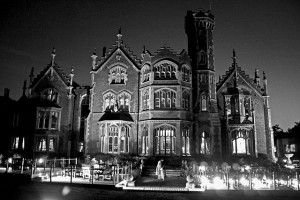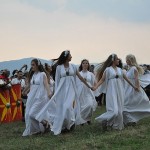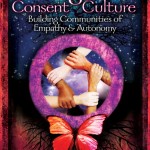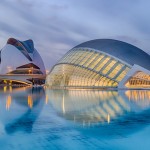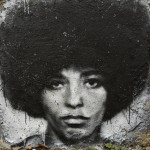The Patheos Public Square question for this month is:
Has Hollywood Become Our National Conscience? Many 21st-century movies—both animated children’s films and big production feature films—have tackled moral and cultural questions in ways that have shaped the public conversation. Is this good and helpful or dangerous? In what ways has Hollywood asked the right questions and shaped the discourse? Can the art of movie-making be an act of social justice?
My answer is, I suppose, “it depends”. If the agenda of the film is generally progressive and inclusive, that’s great — but there are also some harmful tropes in Hollywood movies, and some disappointing things.
Superheroes
Honestly – if I never see another uncritical superhero movie, that’ll be just fine. I am fed up of lone vigilantes and their superpowers. Give me the complex and multifaceted heroes of the Marvel universe, like the X-Men (and women), and that’s much more interesting and diverse. The notion that we will all be saved by Superman or Batman is deeply flawed and annoying. My favourite superhero movie is of course The Incredibles. I also really liked Megamind, because it was ultra-critical of the squeaky-clean superhero. The problem with the whole notion of superheroes like Superman is that they promote the notion that problems can only be solved by a single individual with superpowers, and that there is some evolutionary arc that points towards the appearance of superheroes.
Revenge
One of the worst things about Hollywood movies is the idea that a man who has been wronged can and should go out like a lone vigilante and take revenge. This is found in film after film and seems to be regarded as mostly unproblematic. Vengeful people end up hurting innocent bystanders and they don’t actually benefit the person they are trying to take vengeance for. It is also part of the rugged individualism that is often claimed to be part of the American psyche. Really, you should all be slightly grumpy and moany like the English. It’s much more fun.
White saviour complex
Another really bad trope is “white people solve racism”, because according to this trope, obviously Black people couldn’t have been resisting and organising on their own, they clearly need a “white saviour” to come and rescue them. Hence we have films about white anti-slavery and anti-racism activists, but not so many about Black activists. The situation is improving here – but the dire example of the film The Help tells you everything you need to know about this phenomenon.
Everyone in the movies is white, male, and straight
A related phenomenon is the notion that everyone in the future is white. Obviously Gene Roddenberry (Star Trek) did his very best to kick this notion into the long grass, with the wonderful Ahura (played by Nichelle Nichols), and other great characters. Firefly and Babylon 5 also get honourable mentions here for having more than one excellent black character (the doctor in Babylon 5, and Zoe and Shepherd Book in Firefly). But other films and TV shows quite frequently have an overwhelming number of white characters. But where are the LGBT characters?
I was very excited by the new Star Wars movie, The Force Awakens, from the perspective of equality. There’s a film that passes the Bechdel Test.
For those who are unfamiliar with it, the Bechdel Test
asks whether a work of fiction features at least two women who talk to each other about something other than a man. The requirement that the two women must be named is sometimes added.
Another measure of representation is the DuVernay Test:
… named after critically-acclaimed director Ava DuVernay behind 2014’s Martin Luther King, Jr. biopic Selma.
Newly coined by the New York Times writer Manohla Dargis, the DuVernay test passes if a film portrays “fully realized” African Americans and other minorities who have their own plotlines, motivations, desires, and actions that are not informed by white characters.
However, the fact that we needed a Bechdel Test and a DuVernay Test in the first place, because there are so few films that have well-rounded female characters or people of colour in them, is sad.
A Tumblr blog, Every Single Word, has highlighted the lack of representation of people of colour in Hollywood films. Buzzfeed’s Fiona Rutherford explains:
The project’s founder, Dylan Marron, cuts and edits movies to remove all lines spoken by Caucasians – and the resulting clips are pretty depressing.
In the Biblical epic Noah, for example, there are no speaking roles at all for people of colour.
Films like Selma have been redressing the balance a little bit, as did Steven Spielberg’s film Amistad, which mainly focused on the black characters liberating themselves.
But then we get absolute face-palm moments like the fact that the film Suffragette completely failed to include any women of colour in it, despite the fact that there have been Black and Asian people in Britain for centuries (though not as many as there are now), and ignoring the fact that Sophia Duleep Singh was the next President of the Committee of the Suffragette Fellowship after Mrs Pankhurst’s death, and was active as a suffragette around the time depicted by the film.
There is an equivalent test for LGBT inclusion in films, called the Russo Test:
- The film contains a character that is identifiably lesbian, gay, bisexual and/or transgender.
- That character must not be solely or predominantly defined by their sexual orientation or gender identity (i.e. the character is made up of the same sort of unique character traits commonly used to differentiate straight characters).
- The LGBT character must be tied into the plot in such a way that their removal would have a significant effect.
The obvious film that would pass this test would be the recent film Pride, which was totally awesome and most of the characters were gay and lesbian (though there were no bisexuals or transgender people). It wasn’t a Hollywood film though, it was a British film.
Apparently the film Stonewall (about the Stonewall Riots) was really disappointing, in that it made all the trans people (who were most of the main instigators of the riot) into gay characters instead. And reviews of Dallas Buyers’ Club (in which the main character was trans) were mixed, but it was widely agreed that the trans character should have been played by a trans person.
However, things are looking up: back in the day, LGBT, Black, and women’s films were considered niche and special interest. Now they are making big bucks at the box office, that notion is being gradually overturned. But the fact that Suffragette, Stonewall, and similar films were made at all – even with the massive flaws that they had – is encouraging. They could still have been a lot better, though. On balance, I would say that Hollywood these days is generally progressive, but could try harder.
The under-represented, the misrepresented, and the invisible
What about making a decent film about Native Americans (and no, Dances with Wolves does not qualify). Films about trans characters seem woefully thin on the ground, and I can’t remember ever seeing a film about a bisexual character. And some films about Pagans that represent us as something other than teen witches whose spells go horribly wrong (like in The Craft) or witches who never actually do any rituals (like Practical Magic) or witches who summon a demon Jack Nicholson (is there any other kind?) or sex-mad Pagans desperate for a sacrifice (The Wicker Man).
What about the environment?
I would also like to see more films that deal seriously with climate change and the environment. Avatar was alright, but we need more films that inspire people to care for the Earth and the environment. I can’t even think of any recent films about our relationship with Nature right now. Though I really liked The Emerald Forest (1985), and the screenplay was by Rob Holdstock.
Feelgood factor
I don’t like zombie films, horror films, war films, films about the inner workings of capitalism and the law. The kind of films I like are the ones that are quirky and funny and show unexpected solidarity and community between people. Most of the films that I have loved over the last decade or so were made by the excellent Working Title, not Hollywood. I like films where the underdog wins the day, and the powerful are brought low. I like science fiction where interesting characters struggle against dystopias. I like films that question the notion of superheroes, and show solidarity being the key to overcoming oppression.
The great thing about science fiction is that it can show us alternative worlds, both good and bad. Science fiction holds up a mirror to our contemporary dilemmas and mores, and asks “but why does it have to be this way?” Science fiction isn’t about the future, it is about the present. It says, “Don’t dream it – be it.”
